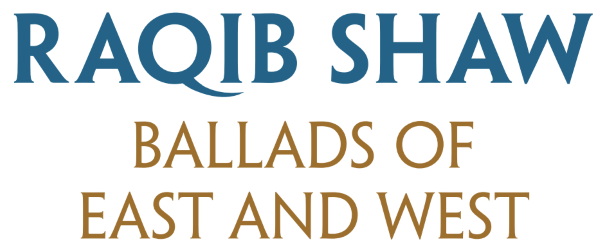
Raqib Shaw’s exhibition takes its title from Rudyard Kipling’s 1889 “The Ballad of East and West.”The so-called Poet of Empire is usually remembered for proclaiming of East and West that “never the twain shall meet.” Shaw proposes the opposite. With his ballads, he creates a resounding affirmation that East and West can meet in art to remarkable effect.
Born in Calcutta (Kolkata), India, Shaw grew up in Kashmir, where throughout history goods, ideas, and people from the East and West converged along the ancient Silk Road. Circled by the Himalayas, Kashmir’s storied past and its associations with the marvelous and mythical cast a profound spell on Shaw’s childhood. As a young man, he became deeply familiar with the cultural production of the region, and indeed much of Asia, as he worked for his family enterprise selling jewelry, antiques, textiles, and carpets from across Asia. He first came to London in 1993 on business and was captivated by paintings by the European old masters at the National Gallery. Now permanently based in London, Shaw’s art echoes his cross-cultural journey, synthesizing Western art history with Asian influences. Within his paintings, references to Japanese aesthetics, Mughal artifacts, Islamic textiles, and Indo-Persian architecture fuse with compositions and themes absorbed from Renaissance masters. In this exhibition, we see hybrid man-beasts in landscapes real and imagined, beautiful and violent—the latter a reflection of the turmoil that plagues Kashmir today in sectarian conflicts. Within each fantastical scenario is a portrait of the artist. Draped in his Uchikake kimono or Jamawar shawl, he is engaged in small, life-affirming actions, his pensive demeanor seeming to concentrate the sorrow of the world.
Artist Biography
Raqib Shaw is represented by Pace Gallery, New York, and White Cube, London. He has had solo exhibitions at Ca’Pesaro International Gallery of Modern Art, Venice (2022); Scottish National Gallery of Modern Art, Edinburgh (2018); The Dhaka Art Summit (2018); The Whitworth, Manchester (2017); White Cube at Glyndebourne (2016); Rudolfinium, Prague (2013); Manchester Art Gallery (2013); Kunsthalle Wien, Vienna (2009); The Metropolitan Museum of Art, New York (2008); Museum of Contemporary Art, Miami (2006); and Tate Britain, London (2006). He has shown in group exhibitions at Manchester Art Gallery (2020); Leopold Museum, Vienna (2018); Seventh Asia Pacific Triennale, Queensland (2012); First Kyiv Biennale (2012); Seventeenth Biennale of Sydney (2010); Sixth Gwangju Biennale (2006); and Prague Biennale (2005).
